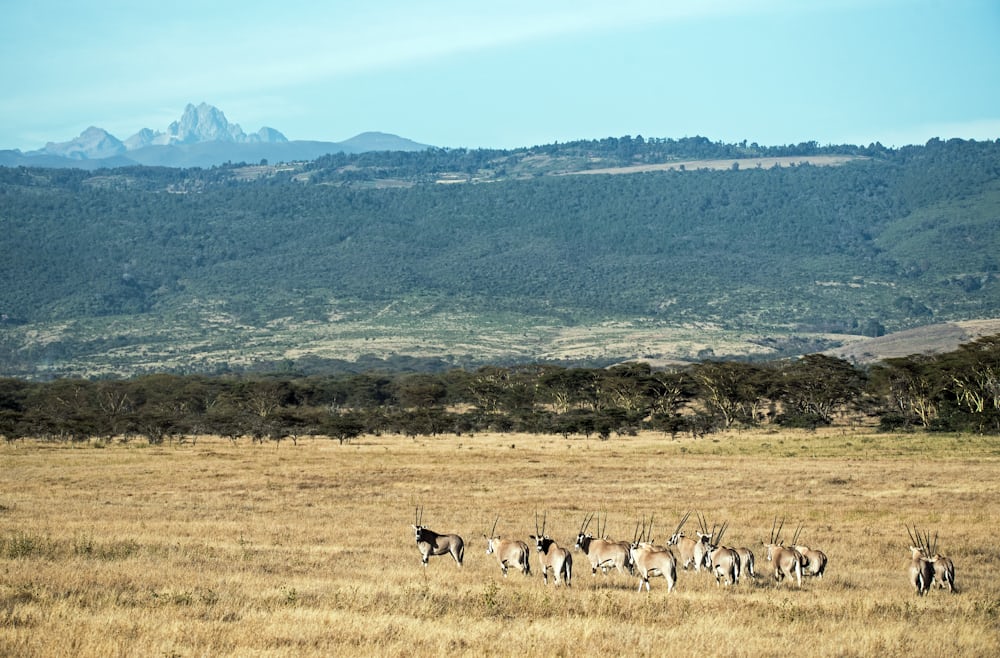Mount Kenya stands as an iconic symbol of natural beauty and adventure in Africa. Rising majestically to an elevation of 5,199 meters (17,057 feet), it is not only the highest mountain in Kenya but also the second-highest peak on the continent. Its snow-capped summit and diverse ecosystems have attracted explorers, climbers, and nature enthusiasts for centuries. In this exploration, we delve into the geological marvel, ecological diversity, cultural significance, and mountaineering allure of Mount Kenya.
Geological Marvel:
Mount Kenya, an extinct stratovolcano, formed millions of years ago through volcanic activity and subsequent glaciation. Its distinctive rugged peaks, sheer cliffs, and U-shaped valleys bear witness to the forces of nature that have shaped it over millennia. The mountain’s geological composition, including lava flows, volcanic ash, and sedimentary rocks, offers insights into Earth’s geological history and processes.
Mount Kenya’s geological history is a captivating tale of volcanic activity and glacial sculpting spanning millions of years. Formed from successive eruptions of molten rock and ash, the mountain’s stratovolcano structure is a testament to the powerful forces that shape the Earth’s surface.
Over time, the accumulation of lava flows and pyroclastic deposits created the mountain’s distinctive cone-shaped profile, characterized by steep slopes and rugged ridges. As volcanic activity waned, the landscape underwent transformation through the erosive power of glaciers, which carved deep valleys and cirques into the mountain’s flanks.
The remnants of these ancient glaciers, manifested in moraines and U-shaped valleys, provide evidence of Mount Kenya’s glacial past and its role in shaping the surrounding landscape.
Ecological Diversity:
Mount Kenya’s varied altitudinal zones support a rich tapestry of ecosystems, from lush montane forests to alpine meadows and glaciers. The lower slopes are cloaked in dense forests teeming with biodiversity, including endemic plant species and diverse wildlife such as elephants, buffalo, and monkeys.
As altitude increases, the landscape transitions to moorlands adorned with giant lobelias and other unique flora adapted to the harsh alpine conditions. Above the tree line, rocky slopes give way to glaciers and snowfields, creating a dramatic contrast against the equatorial backdrop.
Mount Kenya’s ecological diversity is a testament to its unique position straddling the equator, where tropical forests give way to alpine tundra in a matter of kilometers. The mountain’s altitudinal gradient creates a mosaic of habitats, each harboring a distinct assemblage of flora and fauna adapted to its specific conditions.
At lower elevations, lush montane forests blanket the slopes, providing habitat for a rich diversity of plant species, including towering hardwoods, epiphytes, and endemic orchids. As altitude increases, the forest gives way to afro-alpine moorlands dominated by tussock grasses, giant senecios, and iconic giant lobelias, which thrive in the harsh alpine environment.
Above the tree line, rocky slopes and glacial valleys support hardy alpine plants, while permanent snow and ice cling to the highest peaks, sustaining unique microorganisms adapted to extreme cold.
Mount Kenya’s ecological richness and diversity make it a haven for scientists, conservationists, and nature enthusiasts alike, eager to unravel its secrets and protect its fragile ecosystems for future generations.
Cultural Significance:
For the indigenous Kikuyu people, Mount Kenya holds profound cultural significance and spiritual importance. Known as Kirinyaga, meaning “mountain of whiteness” in the Kikuyu language, it is regarded as the realm of Ngai, the supreme deity in their traditional beliefs.
Various rituals, ceremonies, and taboos are associated with the mountain, reflecting its central role in Kikuyu culture and identity. Additionally, Mount Kenya’s prominence has inspired countless myths, legends, and folklore among local communities, further enriching its cultural heritage.
Mount Kenya holds deep cultural significance for the indigenous communities that have inhabited its slopes for centuries, particularly the Kikuyu people who regard it as the abode of Ngai, the Supreme Creator. Known as Kirinyaga, or “mountain of whiteness,” in the Kikuyu language, it is revered as a sacred site where ancestral spirits reside and divine blessings are sought through rituals and ceremonies.
The mountain’s peaks, caves, and waterfalls are imbued with spiritual meaning and serve as pilgrimage sites for traditional healers, elders, and devotees seeking guidance and protection. Sacred groves and prayer trees dot the landscape, serving as focal points for offerings and prayers to the mountain’s guardian spirits.
Mount Kenya’s cultural heritage is intertwined with the spiritual beliefs, oral traditions, and customary practices of the Kikuyu people, enriching its significance as a cultural landscape of global importance.
Mountaineering Allure:
Mount Kenya’s challenging terrain and diverse climbing routes attract adventurers from around the world seeking to conquer its lofty peaks. The most popular route, the Naro Moru route, offers a scenic ascent through forested slopes and alpine moorlands before reaching Point Lenana, the third-highest peak and the most accessible summit.
Technical climbs to the higher peaks, Batian and Nelion, require experienced mountaineers equipped with specialized gear and skills. The thrill of reaching the summit, coupled with breathtaking views of the surrounding landscape, makes Mount Kenya a bucket-list destination for climbers and outdoor enthusiasts alike.
Mount Kenya holds deep cultural significance for the indigenous communities that have inhabited its slopes for centuries, particularly the Kikuyu people who regard it as the abode of Ngai, the Supreme Creator. Known as Kirinyaga, or “mountain of whiteness,” in the Kikuyu language, it is revered as a sacred site where ancestral spirits reside and divine blessings are sought through rituals and ceremonies.
The mountain’s peaks, caves, and waterfalls are imbued with spiritual meaning and serve as pilgrimage sites for traditional healers, elders, and devotees seeking guidance and protection. Sacred groves and prayer trees dot the landscape, serving as focal points for offerings and prayers to the mountain’s guardian spirits.
Mount Kenya’s cultural heritage is intertwined with the spiritual beliefs, oral traditions, and customary practices of the Kikuyu people, enriching its significance as a cultural landscape of global importance.
In conclusion, Mount Kenya stands as a testament to the awe-inspiring forces of nature, boasting geological wonders, ecological diversity, cultural significance, and mountaineering allure. Whether marveling at its majestic peaks from afar or summiting its heights, the allure of Mount Kenya transcends borders and beckons adventurers to explore its timeless beauty.



